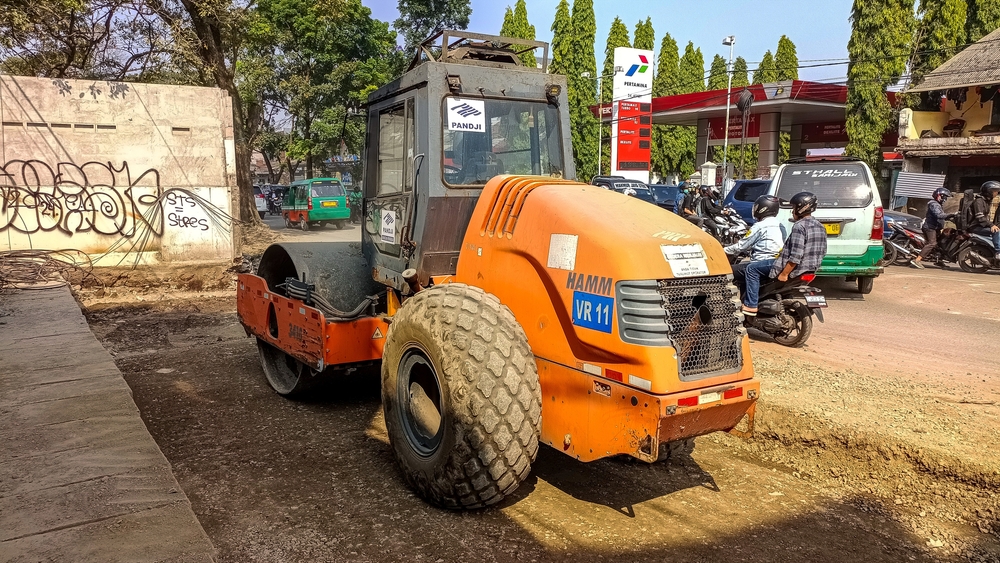Mastering the balance of loads during material handling is a critical aspect of ensuring operational efficiency and safety in the construction industry. Proper load balancing directly influences the stability and control of materials in transit, making the understanding of the load’s center of gravity essential.
With the right knowledge and techniques, construction professionals can significantly enhance the safety and efficiency of their operations.
Understanding Load Balance: Concepts and Importance
Load balance in material handling is the strategic distribution of weight to maintain stability and control of materials during movement. At its heart is the concept of the center of gravity — the point where the weight of a load is evenly dispersed in all directions.
When materials are hoisted onto the forks of lifting equipment, knowing the ideal location of the load’s center of gravity becomes crucial. This spot ensures that the load remains stable during transport, preventing tilting, sliding, or worse, toppling, which could lead to damage or injury.
Why is this balance so vital? The answer lies in the inherent risks of material handling. Improperly balanced loads can cause equipment to malfunction or become unmanageable, putting operators and bystanders at risk. Furthermore, understanding and maintaining the optimal center of gravity maximizes the efficiency of operations, reducing the time and effort required to safely transport materials.
Techniques for Achieving Optimal Load Balance
Achieving optimal load balance in material handling is a multifaceted process that demands a combination of knowledge, skill, and the appropriate tools. This balance is essential for ensuring the safety and efficiency of construction operations.
Here are detailed strategies that professionals utilize to maintain the perfect equilibrium:
1. Pre-Assessment of Load
The initial step in ensuring optimal load balance involves a thorough assessment of the load. This includes examining the load’s shape, weight distribution, and potential center of gravity.
Such assessment is not merely about identifying these characteristics but understanding how they will interact with the lifting equipment and the environment.
2. Use of Balancing Equipment
Modern technology provides an array of tools designed to aid in load balancing. Devices such as load cells, which measure weight, and balance beams, which help distribute weight evenly, are invaluable for determining a load’s precise center of gravity.
This technology allows operators to make necessary adjustments before lifting, ensuring the load is as stable as possible. The use of such equipment is a testament to how the construction industry leverages technological advancements to enhance safety and operational efficiency.
3. Proper Loading Techniques
The manner in which a load is positioned on the forks of lifting equipment can drastically affect its balance. It is crucial that the load is centered both horizontally and vertically on the forks to ensure stability.
Additionally, securing mechanisms like straps, chains, or netting are employed to prevent the load from shifting during movement. Such precautions are vital for preventing accidents that could result from the load tilting or falling off the lifting equipment.
4. Operator Training
Comprehensive training programs that include hands-on practice, simulation, and theoretical knowledge equip operators with the skills needed to handle the complexities of load balancing. These programs cover everything from the basics of load assessment to the use of advanced balancing equipment and techniques, ensuring operators are well-prepared to tackle the challenges of material handling.
Challenges in Balancing Loads and Solutions
Despite the best efforts and strategies, professionals in the field of material handling often encounter challenges in maintaining load balance. These challenges, however, come with solutions that enable continued operational success:
1. Irregularly Shaped Loads
Loads that do not have a uniform shape pose significant challenges for balance. The solution lies in the use of additional support structures or balance aids that help redistribute the load’s weight more evenly. This might include custom-made pallets or frames that provide the necessary support to maintain balance.
2. Varying Weight Distribution
When a load’s weight is not evenly distributed, it can lead to unpredictable shifts in its center of gravity. The solution involves identifying the heaviest part of the load and ensuring it is positioned closest to the fulcrum or lifting point. This might require adjusting the load’s orientation or adding counterweights to achieve the desired balance.
3. Environmental Factors
External factors such as wind, uneven terrain, and other environmental conditions can adversely affect load balance. Adapting lifting techniques to these factors is crucial for maintaining balance. This could mean reducing the speed of movement, using stabilizers to counteract uneven ground, or waiting for better weather conditions to minimize the impact of wind on the load.
Maintaining Safety and Compliance in Load Handling
In the domain of material handling, particularly within the construction industry, the imperatives of safety and regulatory compliance are paramount. These elements serve not only as the foundation for operational integrity but also as the pillars supporting the well-being of personnel and the legal viability of projects.
Here, we delve deeper into how the meticulous balance of loads is integral to upholding these critical standards:
Safety Protocols
Central to these protocols is the principle of proper load balancing, which ensures that materials are handled in a manner that prevents undue strain on equipment and minimizes the chance of load displacement or collapse. Regular equipment checks form another cornerstone of safety, enabling early identification and rectification of potential hazards.
Moreover, comprehensive operator training equips personnel with the knowledge and skills necessary to navigate the complexities of load handling safely. This training covers not only the mechanics of balancing loads but also the situational awareness required to operate in a dynamic construction environment.
Regulatory Compliance
The regulatory landscape governing material handling is both complex and varied, with standards that can differ significantly from one jurisdiction to another. These regulations encompass a wide range of considerations, from the specificities of equipment usage to the qualifications required for operation.
Mastery of load balancing plays a critical role in complying with these regulations, as improperly balanced loads can lead to violations that endanger both safety and project continuity. Firms must be diligent in their compliance efforts, employing experts or legal advisors to navigate these waters, thereby ensuring that all operations are conducted within the bounds of local and international law.
Continuous Education
The field of material handling is characterized by continuous evolution, with advances in technology, changes in regulations, and shifts in best practices occurring regularly. To maintain a high standard of safety and compliance, it is essential for professionals to engage in ongoing education and training.
This commitment to learning helps individuals stay abreast of the latest safety protocols, technological innovations, and regulatory requirements, fostering a culture of excellence and vigilance. Organizations might implement regular training sessions, subscribe to industry publications, and participate in professional forums and workshops as part of their commitment to continuous education.
Conclusion
The art and science of balancing loads in material handling are fundamental to the success and safety of construction operations worldwide. From understanding the crucial role of the load’s center of gravity to implementing practical techniques for achieving optimal balance, professionals in the field are equipped to face the challenges that come their way.
The construction industry continues to advance by adhering to safety protocols and regulatory standards, ensuring that projects are completed efficiently, safely, and to the highest quality standards. Let this exploration serve as a call to action for continuous improvement and education in the mastery of load balancing, propelling the construction industry toward even greater heights of excellence.









